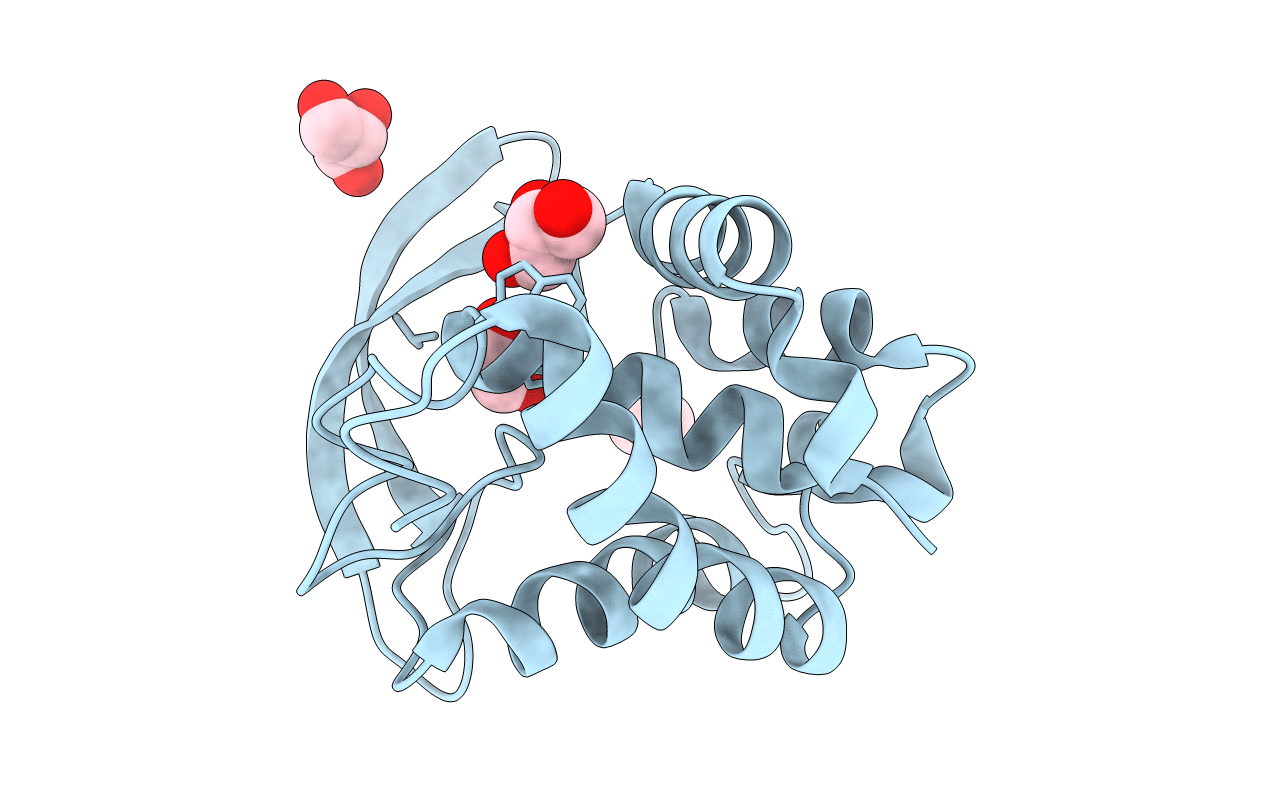
Deposition Date
2021-12-06
Release Date
2022-09-21
Last Version Date
2024-11-06
Entry Detail
PDB ID:
7QFU
Keywords:
Title:
Crystal Structure of AtlA catalytic domain from Enterococcus feacalis
Biological Source:
Source Organism:
Enterococcus faecalis (Taxon ID: 1351)
Host Organism:
Method Details:
Experimental Method:
Resolution:
1.45 Å
R-Value Free:
0.16
R-Value Work:
0.13
R-Value Observed:
0.13
Space Group:
P 31 2 1


